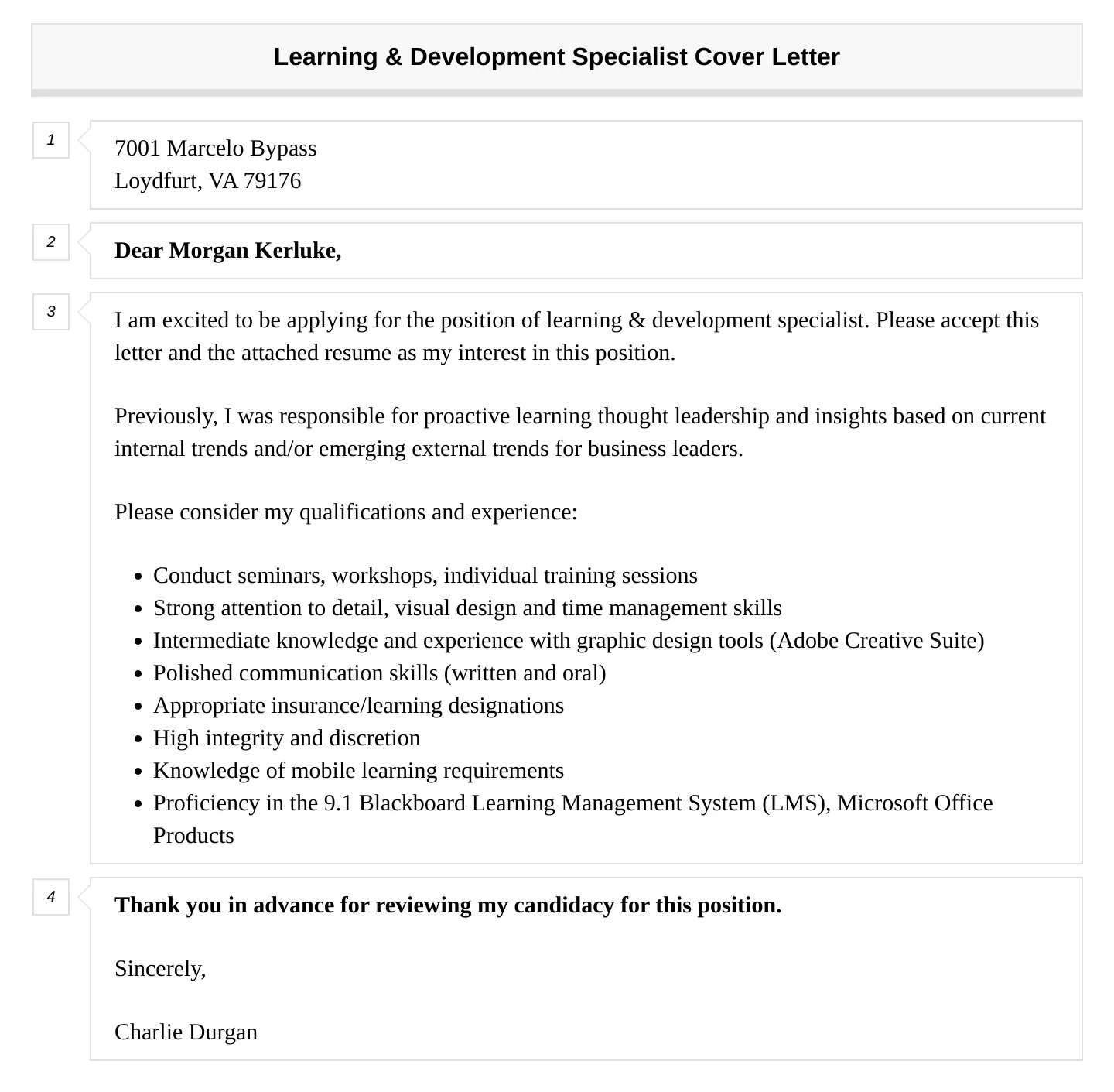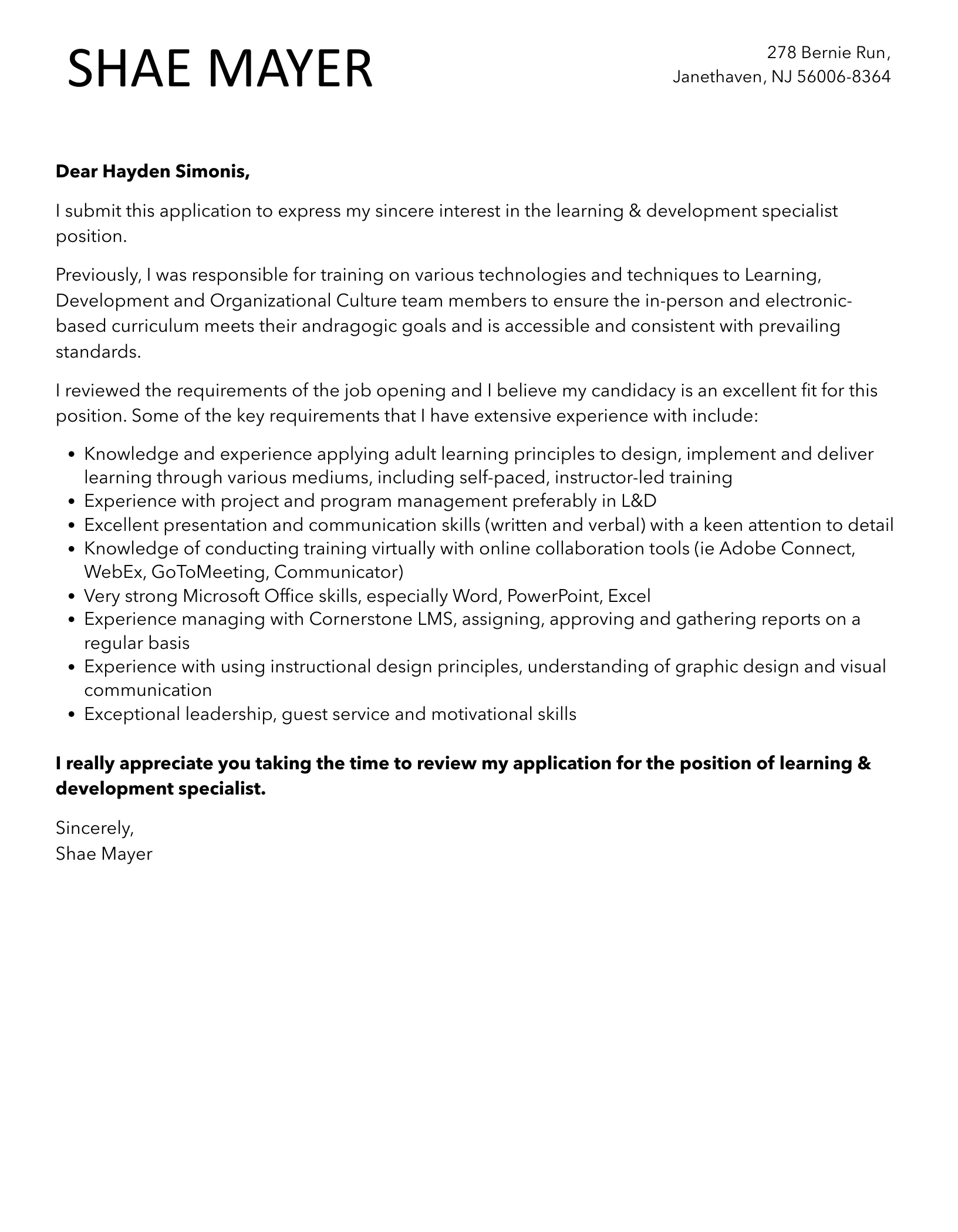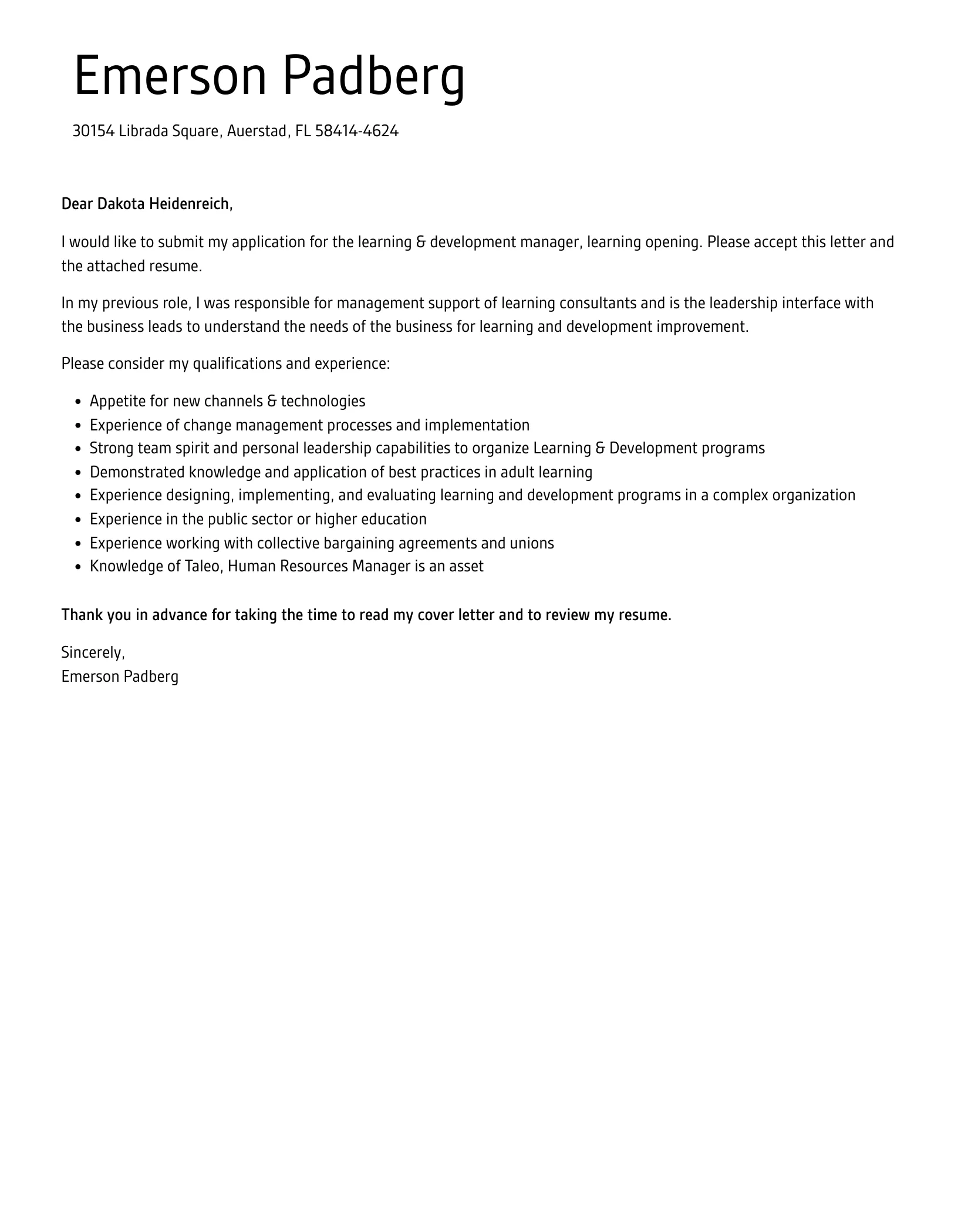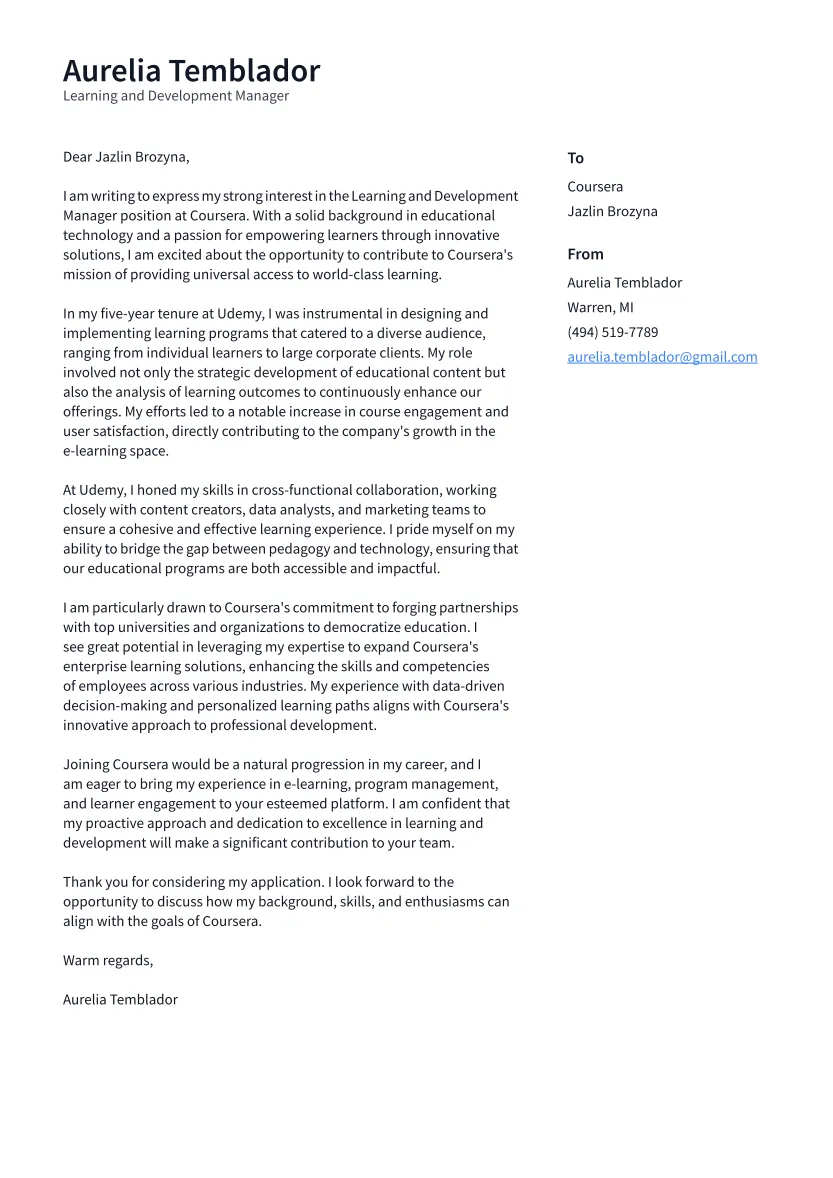Essential Cover Letter Tips for L&D Roles
Landing a role in Learning and Development (L&D) requires more than just a stellar resume; a compelling cover letter is your first opportunity to make a lasting impression. It’s your chance to articulate your skills, demonstrate your understanding of the role, and showcase your passion for fostering growth and development within an organization. This guide provides five essential tips to help you craft a cover letter that not only gets noticed but also lands you the interview. By focusing on the key elements that hiring managers seek, you can significantly increase your chances of success in the competitive field of L&D. Remember, your cover letter is a reflection of your attention to detail and your commitment to excellence – qualities highly valued in the L&D profession. A well-written cover letter can transform your application from ordinary to extraordinary.
Highlight Your Relevant Skills
Your cover letter should immediately highlight the skills most relevant to the L&D role you’re applying for. This means carefully reviewing the job description and identifying the key skills and qualifications the employer is seeking. These might include instructional design, training delivery, needs analysis, performance management, or e-learning development. Instead of simply listing these skills, provide brief examples of how you’ve used them successfully in previous roles. For instance, if the job description emphasizes instructional design, you could mention a project where you designed and developed a training program that resulted in a measurable improvement in employee performance. Use action verbs to describe your accomplishments. For example, use terms like “designed,” “developed,” “implemented,” or “evaluated.” This approach not only demonstrates your skills but also provides concrete evidence of your abilities, making your cover letter more persuasive.
Showcase Your Passion for Learning

In Learning and Development, passion is as important as proficiency. Your cover letter should clearly convey your enthusiasm for the field and your genuine interest in helping others learn and grow. Share your personal philosophy on learning and development, explaining why you’re drawn to this profession. You might discuss how you find fulfillment in creating engaging learning experiences or in seeing individuals develop new skills. You can also mention any professional development activities you’ve undertaken to enhance your knowledge and skills. Demonstrating a commitment to continuous learning shows that you’re not only passionate about L&D, but also dedicated to staying current with the latest trends and best practices. This enthusiasm will resonate with hiring managers who are looking for someone who is truly invested in the success of their employees and the organization.
Quantify Your Achievements
Numbers speak volumes in the world of L&D. Instead of simply stating what you’ve done, quantify your achievements to demonstrate your impact. Use metrics to showcase the results of your work whenever possible. For example, if you developed a training program that improved employee performance, mention the percentage increase in productivity or the reduction in errors. If you implemented a new e-learning platform, state the number of users who benefited from it. If you reduced training costs, specify the amount saved. Quantifying your achievements provides concrete evidence of your value and helps hiring managers understand the tangible benefits you can bring to their organization. Even if your achievements are not directly related to numbers, use specific examples that illustrate your impact. Highlighting your successes with data and quantifiable results makes your cover letter much more compelling and memorable.
Tailor to the Job Description
Generic cover letters are a surefire way to end up in the rejection pile. Every cover letter you send should be customized to the specific job you’re applying for. This means carefully reading the job description and identifying the key requirements and responsibilities. Then, highlight your relevant skills and experiences that align with those requirements. Use the same keywords and phrases that the employer uses in the job description to demonstrate that you understand their needs and have the qualifications they are seeking. Customizing your cover letter shows that you’ve taken the time to understand the role and the organization, and that you’re genuinely interested in the opportunity. This level of personalization significantly increases your chances of getting noticed and making a positive impression on the hiring manager. Avoid the temptation of using a generic template; tailor each cover letter to stand out from the crowd.
Proofread Meticulously

Typos and grammatical errors are a major turnoff for hiring managers. Your cover letter is a reflection of your professionalism and attention to detail, so it’s essential to proofread it carefully before submitting it. Check for spelling mistakes, grammatical errors, and inconsistencies in formatting. Ideally, have someone else read your cover letter as well, as a fresh pair of eyes can often catch errors that you might miss. Pay attention to the overall tone and flow of your letter to ensure it’s clear, concise, and engaging. A well-written, error-free cover letter demonstrates your commitment to excellence and professionalism, and it significantly increases your chances of making a positive first impression. Take the time to proofread thoroughly; it could be the difference between getting an interview and being overlooked.
Key Elements of a Strong L&D Cover Letter
Your Contact Information
Start your cover letter with your contact information. Include your full name, phone number, email address, and LinkedIn profile URL. This allows the hiring manager to easily contact you if they’re interested in your application. Ensure that your email address is professional and that your LinkedIn profile is up-to-date and reflects your relevant experience and skills. Making it easy for recruiters to reach you is the first step in the process.
The Introduction that Grabs Attention

Your introduction is your chance to make a strong first impression. Clearly state the position you’re applying for and how you learned about the opportunity. Briefly highlight your key qualifications and express your enthusiasm for the role and the organization. Avoid generic introductions. Instead, try to craft a compelling opening that captures the hiring manager’s attention. This could involve mentioning a specific project or achievement that aligns with the job requirements or expressing your admiration for the company’s mission or values. Your introduction should set the tone for the rest of your letter, demonstrating your personality and your suitability for the role.
Body Paragraphs Highlighting Experience
The body of your cover letter is where you showcase your relevant experience and skills in detail. Use specific examples to illustrate your accomplishments and demonstrate how you’ve successfully applied your skills in previous roles. Structure your paragraphs logically, using the STAR method (Situation, Task, Action, Result) to describe your experiences. Start by describing the situation, then the task you were assigned, the actions you took, and the results you achieved. This approach allows you to effectively communicate your skills and quantify your achievements. Tailor your body paragraphs to align with the requirements of the specific job you’re applying for, highlighting the skills and experiences that are most relevant to the role. This personalized approach will help you stand out from other applicants and show the hiring manager why you’re the ideal candidate.
Call to Action in the Closing
End your cover letter with a strong call to action. Thank the hiring manager for their time and consideration, and reiterate your interest in the position. Clearly state that you’re looking forward to hearing from them and that you’re available for an interview. You can also mention that you’re eager to discuss your qualifications further. Avoid generic closings; instead, express your genuine enthusiasm for the opportunity. Make sure you proofread your entire cover letter, including your closing, to ensure that it’s free of any errors. A well-crafted closing leaves a lasting impression and encourages the hiring manager to take the next step in the hiring process. By implementing these tips, you can create a cover letter that positions you as a strong candidate and significantly increases your chances of securing an L&D role.
